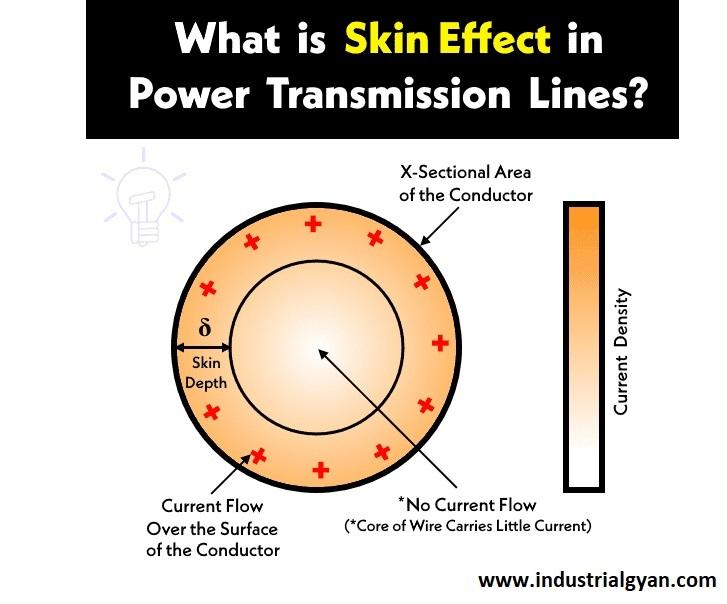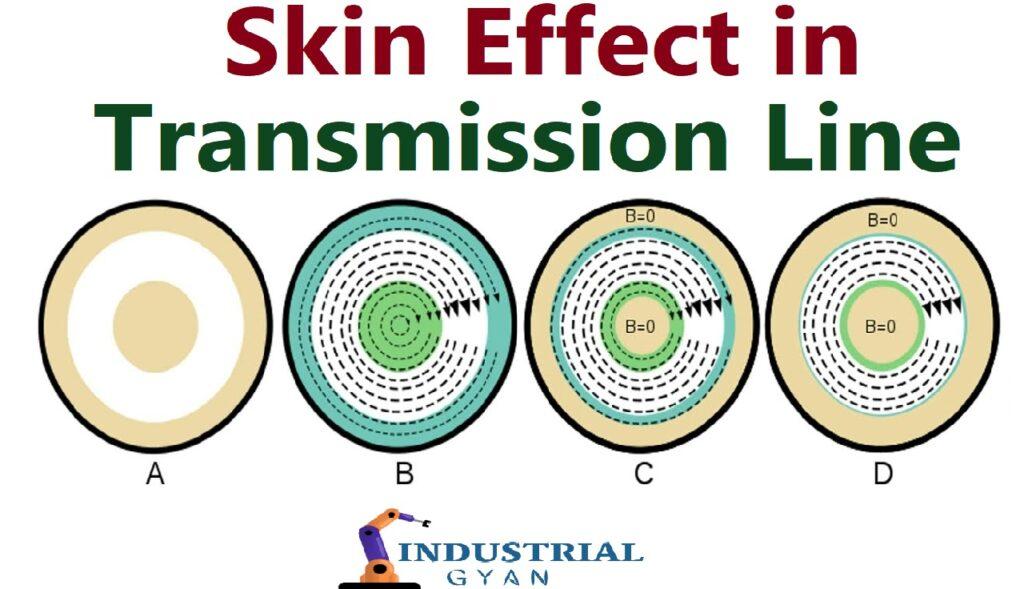Introduction
Transmission lines form the backbone of modern electrical power systems and communication networks, facilitating the efficient transfer of signals and power over long distances. While they are designed to optimize signal integrity, a phenomenon known as the skin effect in transmission line can affect their performance. In this article, we delve into the intricacies of the skin effect in transmission lines, exploring its causes, characteristics, and practical implications. Furthermore, we examine various strategies employed to mitigate the impact of the skin effect, ensuring reliable and efficient transmission.
Table of Contents
- What is the Skin Effect in Transmission Lines?
- Causes of the Skin Effect
- Characteristics of the Skin Effect
- Implications of the Skin Effect on Transmission Lines
- Measuring and Analyzing the Skin Effect
- Factors Influencing the Skin Depth
- Mitigation Strategies for the Skin Effect
- Conductor Selection and Design
- Hollow Conductors and Litz Wire
- Surface Plating and Coating
- Transposition and Bundling
- Multilayer Conductors
- Skin Effect in High-Frequency Applications
- Frequently Asked Questions (FAQs) 14.1 What is the skin depth in transmission lines? 14.2 How does the skin effect impact power transmission efficiency? 14.3 Is the skin effect more prominent at high frequencies? 14.4 Can the skin effect be eliminated entirely? 14.5 What is the relationship between skin depth and conductor resistance? 14.6 Does the skin effect impact both AC and DC signals?
- Conclusion
1. What is the Skin Effect in Transmission Lines?
The skin effect refers to the concentration of alternating current (AC) near the surface of a conductor, resulting in a non-uniform distribution of current flow. As the frequency of the AC signal increases, the current tends to travel more on the outer layers of the conductor, while the inner regions carry less current. This effect causes an increase in effective resistance and a decrease in the effective cross-sectional area available for current flow. Consequently, the skin effect can significantly impact the performance of transmission lines, leading to power losses, increased conductor heating, and reduced signal quality.

2. Causes of the Skin Effect
The skin effect arises due to the interaction between the AC signal and the magnetic field it generates around the conductor. When an AC signal flows through a conductor, it induces a magnetic field that opposes the current flow, resulting in self-induction. This self-inductance generates an opposing magnetic field that restricts the current flow to the outer regions of the conductor. As a result, the current density is highest at the conductor surface, gradually decreasing towards the core.
3. Characteristics of the Skin Effect
Understanding the characteristics of the skin effect is crucial for assessing its impact on transmission lines. Here are some key features:
- Non-Uniform Current Distribution: The skin effect causes the current density to be highest at the surface of the conductor, gradually decreasing towards the core.
- Frequency Dependency: The severity of the skin effect increases with the frequency of the AC signal. At higher frequencies, more current is forced to flow through the outer layers of the conductor.
- Depth of Penetration: The depth to which the current penetrates the conductor is known as the skin depth. It determines the effective cross-sectional area for current flow.
- Increased Effective Resistance: As the skin effect concentrates the current near the surface, the effective resistance of the conductor increases, leading to higher power losses.
- Temperature Rise: The non-uniform current distribution caused by the skin effect results in increased conductor heating, potentially affecting the overall system performance.
The skin depth (δ) can be calculated using the following formula:
δ = √(2 / (π * f * μ * σ))
Where:
- δ: Skin depth
- f: Frequency of the AC signal
- μ: Magnetic permeability of the conductor material
- σ: Electrical conductivity of the conductor material
4. Implications of the Skin Effect on Transmission Lines
The skin effect can have significant implications for the performance and efficiency of transmission lines. Some of the key implications include:
- Increased Power Losses: The concentration of current near the surface leads to higher effective resistance, resulting in increased power losses.
- Voltage Drop: The non-uniform current distribution can cause voltage drops along the length of the transmission line, affecting signal quality and system performance.
- Conductor Heating: The skin effect causes uneven heating of the conductor, potentially leading to thermal issues and decreased system reliability.
- Signal Distortion: As the skin effect impacts signal transmission, it can cause distortion, attenuation, and phase shifts in high-frequency applications.

5. Measuring and Analyzing the Skin Effect
To quantify the impact of the skin effect, engineers employ various techniques to measure and analyze its characteristics. Some common methods include:
- Skin Depth Calculation: The skin depth can be calculated using mathematical formulas based on the properties of the conductor material and the frequency of the AC signal.
- Impedance Measurements: Impedance measurements can provide insights into the resistance and reactance components affected by the skin effect.
- Finite Element Analysis: Advanced numerical simulations, such as finite element analysis, enable engineers to study the behavior of the skin effect in complex transmission line geometries.
- Experimental Testing: Conducting experiments with different conductor materials, frequencies, and geometries can provide valuable empirical data to understand the skin effect and its impact.
6. Factors Influencing the Skin Depth
Several factors influence the skin depth in transmission lines. pin type insulator It’s important to consider these factors while designing and optimizing transmission systems. Some significant factors include:
- Conductor Material: The electrical conductivity and magnetic permeability of the conductor material affect the skin depth. Materials with higher conductivity and permeability tend to have shallower skin depths.
- Frequency of the AC Signal: Higher frequencies result in shallower skin depths, intensifying the skin effect.
- Conductor Diameter: A larger conductor diameter leads to a deeper skin depth, reducing the impact of the skin effect.
- Temperature: The skin effect can be influenced by temperature changes, with higher temperatures generally increasing the skin depth.

7. Mitigation Strategies for the Skin Effect
Although it is challenging to completely eliminate the skin effect, several effective strategies can mitigate its impact on transmission lines. These strategies include:
1. Conductor Selection and Design
Choosing the right conductor material and optimizing the design can significantly minimize the effects of the skin effect. Materials with high electrical conductivity, such as copper or aluminum, are commonly used. Additionally, employing larger diameter conductors can reduce the skin effect, allowing for better current distribution.
2. Hollow Conductors and Litz Wire
Hollow conductors with a larger surface area can enhance current distribution and reduce the skin effect. Litz wire, which consists of multiple individually insulated strands, further mitigates the skin effect by distributing the current across multiple paths.
3. Surface Plating and Coating
Applying a conductive plating or coating to the conductor surface can alter its electrical characteristics and mitigate the skin effect. These platings can improve current distribution and reduce effective resistance.
4. Transposition and Bundling
Transposition involves periodically swapping conductor positions within a transmission line, equalizing the exposure to the skin effect. Bundling multiple conductors together can also minimize the overall impact of the skin effect.
5. Multilayer Conductors
Using multilayer conductors, consisting of multiple thin layers of different conductive materials, can effectively reduce the skin effect by redistributing the current across various layers.
6. Skin Effect in High-Frequency Applications
In high-frequency applications, where the skin effect is more prominent, specific techniques like using waveguides, striplines, or coaxial cables can be employed to minimize the skin effect and ensure efficient signal transmission.
Conclusion
The skin effect in transmission lines poses significant challenges to signal transmission and power efficiency. Understanding its causes, characteristics, and implications is crucial for designing robust and reliable transmission systems. Difference Between Shell type and Core type Transformer By employing appropriate mitigation strategies and optimizing conductor selection and design, engineers can effectively reduce the impact of the skin effect. Continuous research and advancements in material science and transmission line technologies are further enhancing our ability to overcome the limitations imposed by the skin effect, paving the way for more efficient and reliable power and communication networks.
You can follow us on LinkedIn

I am a highly motivated and skilled individual with a passion for Electrical engineering. I have 1 year of experience in Robotics and Electrical engineering, which has allowed me to develop a strong set of skills in PLC, Painting Robots, SCADA. I am a quick learner and am always looking for new challenges and opportunities to expand my knowledge and skills. I am a team player and enjoy working with others to achieve a common goal. Successfully completed many projects for a various clients in the automobile sector.
Thank You

